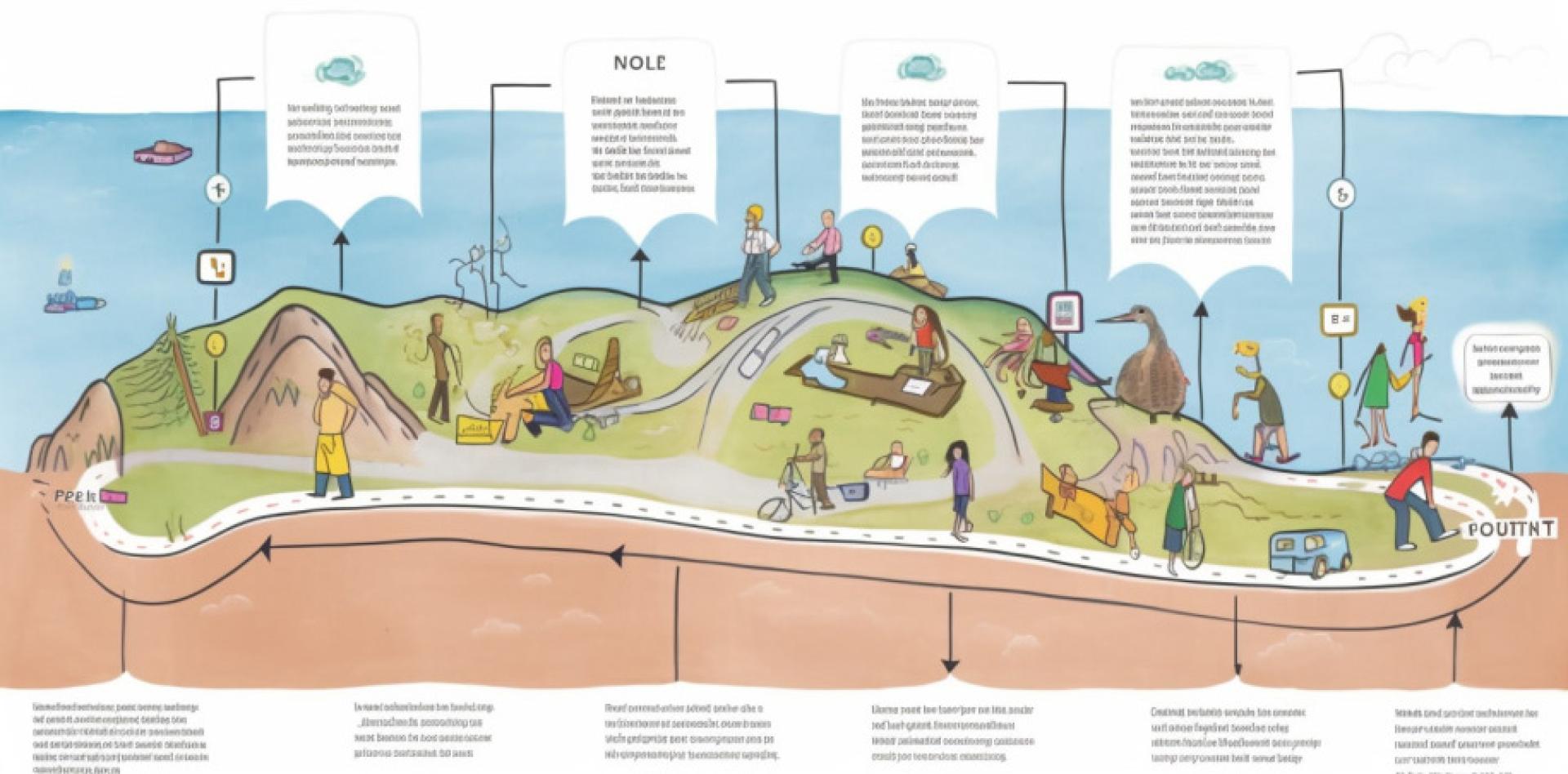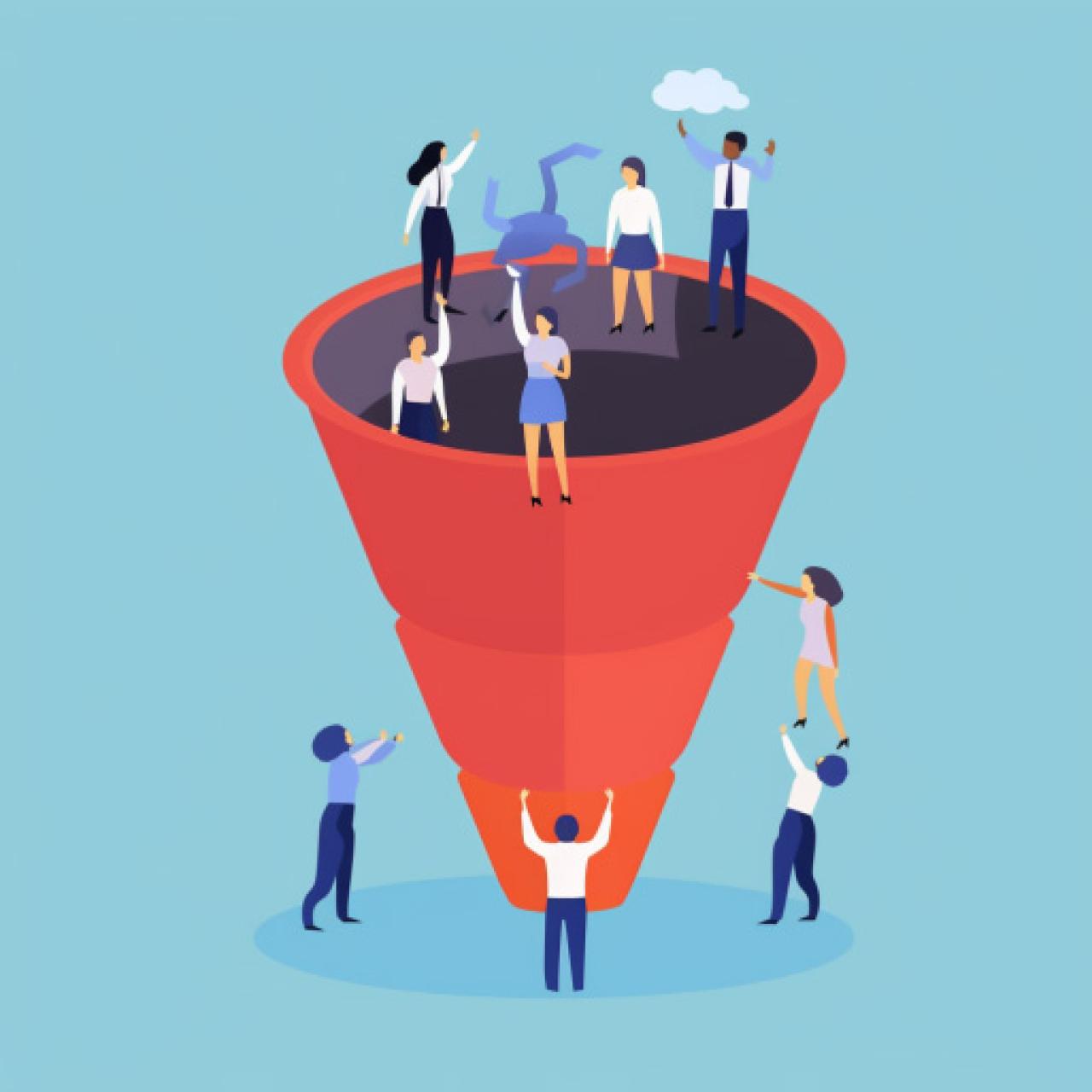
- Understanding What a Funnel Is (AIDA)
- What Platforms You Should be Focusing on At Each Level
- What Data You Need to be Collecting
- How to Know that Your Funnel Is Working (and how to quickly fix things)
Understanding What a Funnel Is (AIDA)
Put simply: a marketing funnel is a framework used to describe the various stages that a customer goes through before making a purchase. It is based on the AIDA model, which stands for Attention, Interest, Desire, and Action.
Why is it called a “funnel”? Try to picture an actual, physical funnel in your mind. At the top, you have a wide opening where you are trying to capture as much material, in this case “audience attention”, as possible.
As you move your way down the funnel, there’s less and less room as your material is directed toward an end point. This is what we want to do with our audience: have a large catch-all opening for them to step into, then focus and direct them toward a specific endpoint.
In the case of the marketing funnel, it’s a useful visual aid to understand the customer journey and how your brand encourages movement down toward your conversion point. Traditionally, the marketing funnel has four distinct phases: attention, interest, desire, action (AIDA).
The first stage of the marketing funnel is Attention, where marketers aim to grab the attention of potential customers and make them aware of their brand and products. This can be achieved through various marketing channels, such as advertising, content marketing, social media, and search engine optimization.

The next stage is Interest, where marketers aim to pique the interest of potential customers by highlighting the unique value proposition of their products or services. This can be achieved by providing informative content, offering product demos or free trials, and showcasing customer reviews or testimonials.
The third stage is Desire, where marketers aim to build a desire for their products or services by highlighting the benefits and addressing any objections or concerns that potential customers may have. This can be achieved by creating a sense of urgency or scarcity, offering special promotions or discounts, and providing social proof or endorsements from influencers.
The final stage is Action, where marketers aim to convert potential customers into actual customers by prompting them to take action, such as making a purchase or signing up for a service. This can be achieved by providing clear calls to action, offering a smooth and convenient purchasing process, and following up with post-purchase support or engagement.
The AIDA model is a useful version of the marketing funnel framework and is often used by professional marketers to understand the different stages of a customer journey and tailor their strategies accordingly. By focusing on each stage of the funnel and providing value to potential customers along each step, marketers can improve their chances of attracting and retaining customers over time.
What Platforms You Should be Focusing on At Each Level
There are several platforms that you can use to attract attention during the first stage of the marketing funnel. Here are a few examples or “top-of-funnel” platform categories:
- Social media: Social media platforms like Facebook, Instagram, Twitter, and LinkedIn are great for grabbing the attention of potential customers. You can create engaging posts, use paid social media ads, and engage with users to build brand awareness.
- Search engines: Search engine optimization (SEO) can help you rank higher in search engine results pages (SERPs), increasing your visibility and attracting more visitors to your website.
- Content marketing: Creating valuable and informative content, such as blog posts, videos, and infographics, can help you attract potential customers who are searching for information related to your products or services. An important note about content marketing is that, unlike other forms of direct marketing, content marketing falls under the category of “brand marketing” which, according to many famous marketers, should specifically not be measured.
- Influencer marketing: Partnering with influencers who have a large following on social media can help you reach a wider audience and generate interest in your brand.
- Email marketing: Building an email list and sending targeted emails to potential customers can help you stay top of mind and drive traffic to your website or landing pages.
It's important to remember that not all categories / platforms will be relevant for every business or industry. It's essential to understand your target audience and where they spend their time online to determine which platforms will be most effective for attracting their attention.
What Data You Need to be Collecting
This is part of our secret process so we’re not going to give too much away here. What we’ve managed to do at Drive Marketing is combine academic knowledge with real-world, cutting-edge tech.

At each stage of the AIDA funnel you need to be tracking certain KPIs. Each KPI is relevant for a specific stage and should be monitored carefully so ensure that your funnel is not degrading over time.
If you’re doing well with “attention”, you want to keep it up to make sure it’s constantly feeding new customers down the funnel. Neglect is often the death sentence for a brand.
Drive’s formula for Campaign IQ:
- Attention: reach, impressions, click-through rates, ad relevancy, shares, likes
- Interest: time on page, bounce, pages per session, micro-engagements
- Desire: return traffic
- Action: sales, contact requests, etc.
How to Know that Your Funnel Is Working (and how to quickly fix things)
So obviously, if you’re tracking your data and seeing customers move their way down the funnel, you know things are working well. But what happens when your funnel is not working as intended? What do you do?
First, you need to do a sanity check and make sure things are firing. Most of the problems we tend to see when we’re asked to help with a problem is related to attribution. Tags not firing because they weren’t set up properly or because some technical aspect wasn’t properly accounted for.
In 2023 we are going to see the end of UA which means that everyone should have already switched over to GA4. For GA4, the proper way to implement tracking is not to use the GA4 snippet, but instead, to use the GTM (Google Tag Manager) snippet and set up GA4 as a tag.
If you’ve used this setup, then GTM has some pretty powerful tools under “preview”. It allows you to test the tags and events in a semi-real environment and note the behaviour of the dataLayer. Really powerful, really important checks. Most of the time, the problem lies here.
If you’ve confirmed that the tracking is working as intended, then the problem is going to be some other barrier related to your messaging, customer experience, your “ask” (maybe your product or service is not compelling enough or no longer relevant to your audience) or some other outside factor. Good data modeling will take a lot of the guess work out of the barrier that’s causing issue.
If you have some hunches, and a large enough audience, your best bet is to A/B test every level of your funnel. At Drive Marketing, we use the scientific method when trying to determine answers to abstract questions. By first formulating a proper hypothesis, we can then design an experiment that will capture the data we need to model in order to confirm a theory.

Once we know, objectively, what the problem is, we can look at realistic options. Again, taking the guess-work out of the situation is key to success but it’s a lot of work requiring complex, expert understanding backed by years of experience.
In short, make sure you’re collecting data properly and the problem is not a false-negative. If a real problem exists, stop and think critically about what the cause could be. Create a hypothesis to design an experiment that will objectively confirm or deny the theory. Implement the experiment and let the data speak for itself in order to decide on a next course of action.
Sounds simple but I can tell you that after 10yrs in this industry, we’re still learning and still coming across new surprises regularly.

